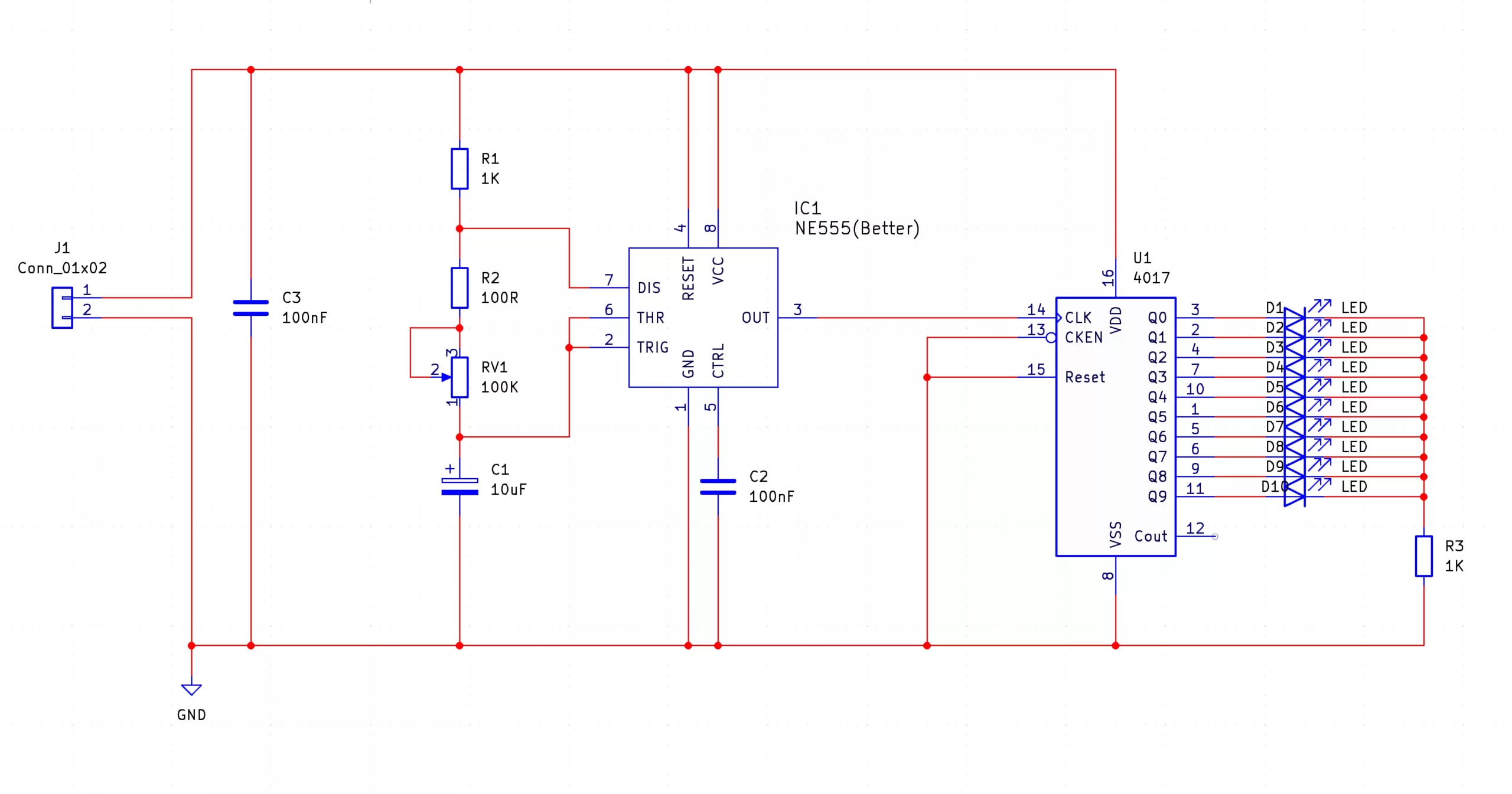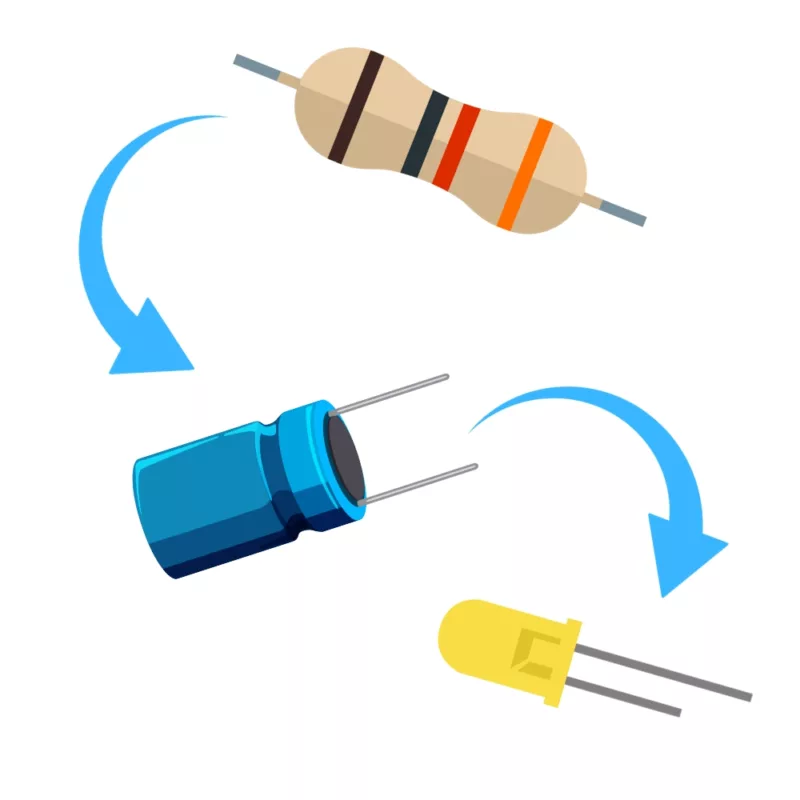4017 Light Chaser SMD Instructions
robinmitchell2024-02-04T11:40:49+00:004017 Light Chaser SMD Instructions
Table of Contents

Introduction
What is the 4017 Light Chaser SMD Trainer?
The 4017 light chaser SMD Trainer kit will let you build the famous 4017 light chaser circuit using only SMD parts. Unlike the 555 Astable and Monostable, the 4017 Light Chaser kit integrates both a 555 (as a clock source), and a 4017 Johnson counter that is used to sequentially light up LEDs. The frequency of the 555 astable determines the speed at which the 4017 counts, and the frequency of the 555 astable is determined by the value of the potentiometer RV1 and capacitor (a smaller RV1 and/or C1 results in a faster count). As the aim of this kit is to introduce you to SMD soldering, the theory behind the circuit will not be covered here, but instead can be learned from the MitchElectronics 4017 Light Chaser kit.

What can you do with the 4017 Light Chaser SMD Trainer?
Besides the obvious use of SMD training, the 4017 light chaser can be used in many different projects. One such popular example is cosplay which requires a constant stream of LED light that supposedly moves around the costume. The 4017 Light Chaser is also good for sequential control if used with other circuits with each LED being replaced with a logic circuit.
Another fantastic use of the 4017 light chasers is model RC runways and dioramas. If the LEDs are replaced with cables that go to individual LEDs, it is possible to create a runway whose LED pattern blinks in the direction of plane landings. Finally, the 4017 Light Chaser is one of those projects that is neat to build, and can be a cool gizmo to have blinking away on the desk.
Schematic

Component List
| Component | PCB Reference | Quantity | Looks Like |
|---|---|---|---|
| 555 Timer IC SOIC8 | IC1 | 1 | |
| 4017 Counter IC SOIC16 | U1 | 1 | |
| 0805 100R Resistor | R2 | 1 | |
| 0805 1K Resistor | R1, R3 | 2 | |
| 0805 100nF Capacitor | C2, C3 | 2 | |
| 10uF Capacitor | C1 | 1 |  |
| 100K Potentiometer | RV1 | 1 |  |
| 0805 Red LED | D1 - D10 | 10 |  |
| PP3 Connector | J1 | 1 |  |
PCB



Construction Tips

3D Printable Jig
To help keep the board stable when soldering, you can download a free STL model of a basic jig that can be 3D printed with all common 3D printers. Watch out for the mounting hole pins as they may be vulnerable to snapping if using a low infill density, low wall thickness, or thick layer heights. Additionally, do not use hot air to solder the PCB when using the jig as you will melt the jig.

SMD Construction Guide
To learn more about how to solder SMD components, read through the MitchElectronics SMD Soldering Guide found in our resources section

Component Order
When soldering the 4017 Light Chaser kit, you will need to pay attention to the following chapters in the SMD soldering guide (which can be seen here). You should also solder the components in the order shown below.
- Integrated Circuits
- Resistors
- Capacitors (ceramic)
- Capacitors (Electrolytic)
- LEDs
- Battery Connector
Make sure that the LED, IC, and electrolytic capacitor are oriented correctly as they are polarised components. Inserting the LED in the wrong orientation will result in no light, and inserting the 555 or 4017 the wrong way round will overheat and break. Components such as the resistors can be soldered in any orientation, and the potentiometer can only be inserted in one direction due to the use of 3 unevenly spaced feet.
Finally, ensure that you connect the battery connector correctly with the red wire connecting to the + terminal, and the black wire connecting to the – terminal.
